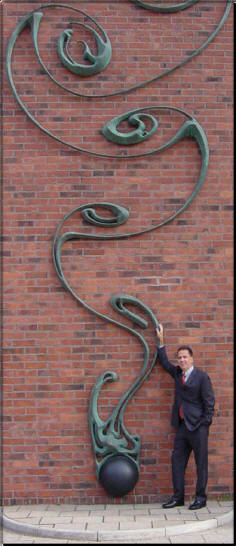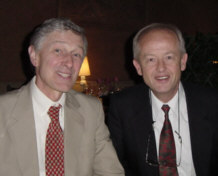or,
How to spend 5 months in beautiful Stockholm and see nothing but the inside of a tiny office
The External Ph.D. Program at the Swedish Royal Institute of Technology
People wonder how I, at mid-career, was able to get my Doctorate Degree in Engineering at the Swedish Royal Institute of Technology in less than six months residency and without speaking Swedish. Some assume I got a “special deal” unavailable to others, because I wrote a widely-used textbook. Some even think it was an honorary degree. Not true.

The Royal Institute of Technology (in Swedish, Kungliga Tekniska Högskolan or KTH) is celebrating its 175th year as Sweden’s premier engineering university. Sweden has a long history as an aeronautical innovator, and has developed and produced numerous aircraft including commercial transports, trainers, and three supersonic fighters (one the world’s first supersonic STOL, and one the world’s first double-delta configuration – a technology later used on the SR-71, SST, and Space Shuttle). Sweden has also contributed to the world’s technological development through its annual awarding of the Nobel prizes, done at the Stockholm Statehouse building where KTH PhD’s are also presented.
Like other major European universities, the KTH PhD program is a bit different from the model followed in the USA. Entrance is at the discretion of the university department. The degree is awarded based solely on the quality of the student’s research, as detailed in the written thesis and publicly defended at the end of the program. While there are specific courses that must be completed totaling a certain number of equivalent credits, there is no requirement that any minimum number be taken at KTH. With my two prior Master’s Degrees it was determined that I already met all coursework requirements so after entry into the program and acceptance of my thesis topic and research plan, I got to work on my research.
I was already developing MDO codes for my RDS-Professional aircraft design software. My PhD research expanded that to include coding and a side-by-side comparison of a number of MDO methods, and the design of four new aircraft designs for use as test cases. I also looked at ways to improve the design realism of the various schemes used to adjust the aircraft design geometry for parametric variations during optimization.

It took about three years, with the last five months in residence. In the KTH program the candidate defends the thesis in a public presentation before an evaluation committee and an “Opponent” (an expert in that field chosen to put the research in context, and to find weaknesses that only an insider would know). All have had three weeks to study the written thesis. This public defense begins with a presentation by the Opponent in which the general field of research is described to help the committee determine how the candidate’s work contributes to the field, followed by the thesis presentation by the candidate. Then the Opponent summarizes the candidate’s work and asks questions, followed by questions by the review committee then the attending public. The committee retires to a small room for deliberations, and with luck and preparation the Opponent “loses” and the degree is awarded.
My thesis, Enhancing Aircraft Conceptual Design using Multidisciplinary Optimization, covers the many optimization methods I studied including step searches, evolutionary methods, and genetic algorithms. It also includes an extensive discussion of the proper selection of design variables and performance constraints, plus some ways to improved design realism in such parametric optimization schemes. It’s free.
Photo: Raymer’s Thesis Advisor Dr. Arthur Rizzi, Head of the Division of Aerodynamics at KTH, and Raymer’s “Opponent” Hannes Ross,Vice President, Advanced Design and Technology (retired), EADS Military Aircraft (formerly DASA, formerly MBB)
Updated 9-10.